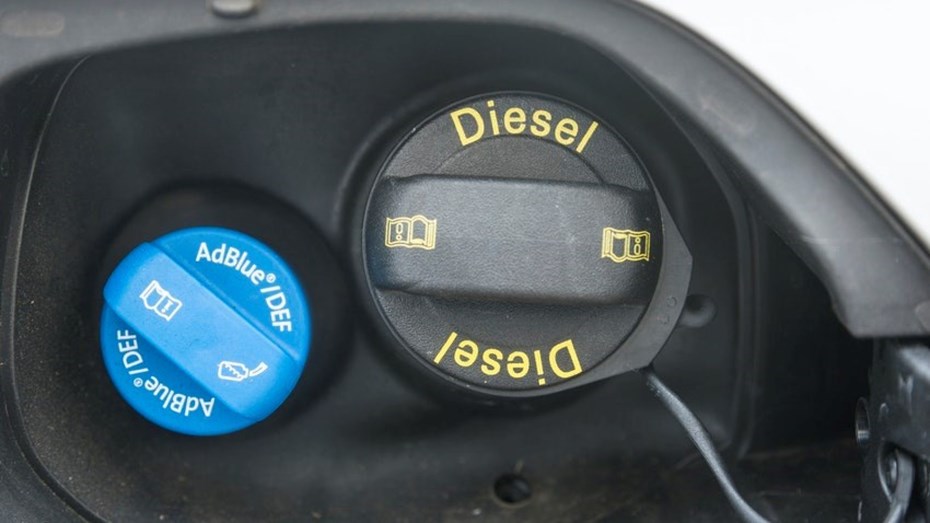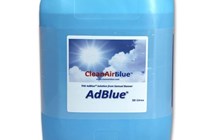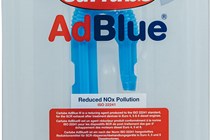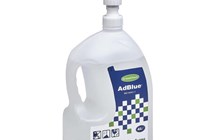Carbon dioxide may be the car exhaust emission that gets all the media attention because of its role in climate change. But poor air quality has also been a concern for many years and nitrogen oxide (NOx) emitted from the exhausts of diesel cars is one of the big culprits. Euro 6 emissions regulations heavily clamped down NOx emissions and many car manufacturers employ AdBlue technology to meet the standards.
Even stricter Euro 7 standards are due to be implemented in the second half of the 2020s but, until then, a large number of diesel cars currently on sale in the UK use AdBlue. As do many older diesels – the first ones to use AdBlue started appearing around 2010.
Here, we’re going to look at exactly what AdBlue is, how it works, which cars use it, and how it affects you as a car owner and driver.
What is AdBlue?
AdBlue is a fluid made from urea and water – urea is an organic compound found in the urine and blood of mammals. It’s colourless, odourless and dries to a sticky residue. It’s non-toxic but is a bit caustic, so don’t get it anywhere near your mouth, nose or eyes.
AdBlue goes into a tank underneath your car and is injected into the exhaust system to remove NOx from the exhaust gases. You can buy AdBlue in containers and many fuel stations have pumps.
What does AdBlue do to your car?
AdBlue is fed into a car’s exhaust system where it reacts with the NOx in the exhaust gases. NOx is a waste product of the combustion process, along with carbon dioxide and many other chemicals.
At high temperatures, AdBlue turns into ammonia, in the process breaking down NOx into its component chemicals – nitrogen and oxygen – which are completely harmless on their own. AdBlue doesn’t eliminate NOx emissions entirely, at least in part because the system only works when the exhaust gas has reached a very high temperature. It does, however, massively reduce the emissions.
The technical term for an AdBlue system is Selective Catalytic Reduction (SCR). There’s a belief that an SCR system reduces a diesel engine’s fuel economy, but that isn’t the case. You can, however, help your car’s diesel engine maintain its efficiency with a diesel engine cleaner. Alternatively, or in conjunction, you can also use an injector cleaner.
Does my car use AdBlue?
If you have a diesel car made since 2015 or so, chances are it uses AdBlue. Some manufacturers hint at it in the brand name of their diesel engines, such as the BlueHDi engines used by Citroen and Peugeot. Volkswagen calls its AdBlue-using diesels TDI SCR. Other manufacturers that use it include Audi, Mazda, Mercedes and Jaguar. A search online will answer whether or not a given car uses AdBlue, as will its handbook.

How often do you need to refill AdBlue?
The first clue that your car is running low on AdBlue is that you’ll see a warning light in the instrument cluster. Only very small amounts of AdBlue are used, so a refill is a rare occurrence. A diesel Volkswagen Passat, for instance, takes about 8,000 miles to empty its 13-litre AdBlue tank. And a diesel Peugeot’s tank is refilled when it’s serviced every 12,500 miles.
However, the rate at which your car consumes AdBlue is affected by your driving style, what types of journey you do and the conditions in which you drive. In that way, AdBlue is much like fuel.
The low AdBlue light generally comes on when there’s around 1,000 to 1,500 miles-worth left in the tank, so you have plenty of time to top it up. Scroll through your car’s trip computer and you should find an AdBlue gauge.
How do I refill my car’s AdBlue tank?
You’ll find the AdBlue filler for many cars under the same flap as the fuel filler. The AdBlue filler has a blue cap. A diesel pump nozzle is too big to fit in the AdBlue filler, however it is possible to accidentally put AdBlue in your diesel tank. Otherwise, it’s no more difficult than refilling the screenwash.
Other cars only need refilling with AdBlue when they’re serviced and, in these cars, the filler cap is usually under the boot floor. You’ll have to lift the boot carpet or remove a side panel to access the filler. If you’re unsure about doing that yourself, a garage will be able to. Be careful not to get any on the carpet – it’s really difficult to clean up.
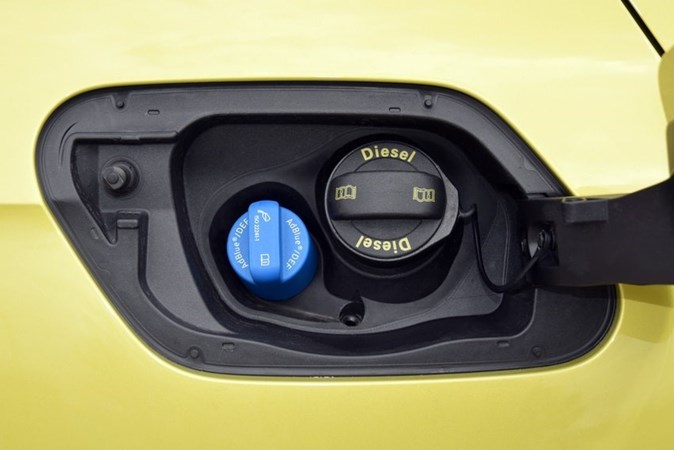
What happens if you run out of AdBlue?
If your car runs out of AdBlue while driving, it’ll automatically switch into a low-power mode that severely limits acceleration. Normal service is resumed once you’ve refilled the AdBlue tank beyond a minimum level, which varies from car to car. If you turn your car’s engine off when the AdBlue has run dry, it may not start until the tank has been replenished.
Where can I buy AdBlue?
There are some fuel stations with AdBlue pumps, usually in the HGV area. Those that don’t have a pump should have containers of various sizes available to buy from the shop. Most car parts shops also sell it. AdBlue is an additional cost of car ownership, which is a bit annoying, but it’s not especially expensive and, as mentioned earlier, it lasts a very long time.
What else do I need to know about AdBlue?
If you buy AdBlue in bulk, it needs to be properly stored. It freezes at minus 11 degrees Celsius and starts to decompose at 30 degrees C, so should be kept between those temperatures. It has a shelf-life of 12 months.
Some sources claim AdBlue is corrosive and should be handled with care, while others claim it’s harmless. We recommend that, if you get any on your hands, you should wash it off immediately. Try to touch as few things as possible because the sticky residue AdBlue leaves easily transfers to other surfaces. Absolutely do not touch your eyes, nose or mouth, or handle food, before you’ve washed your hands. If any AdBlue spills onto your car’s bodywork, wipe or wash it off as soon as possible.
If you have any concerns or questions about refilling your car with AdBlue, consult the handbook for guidance, call a dealer, or take it to a garage. That’s what they’re there for!
Sign up to the Parkers Newsletter to keep up to date with more of the latest reviews, news, and recommendations from the Parkers team.



